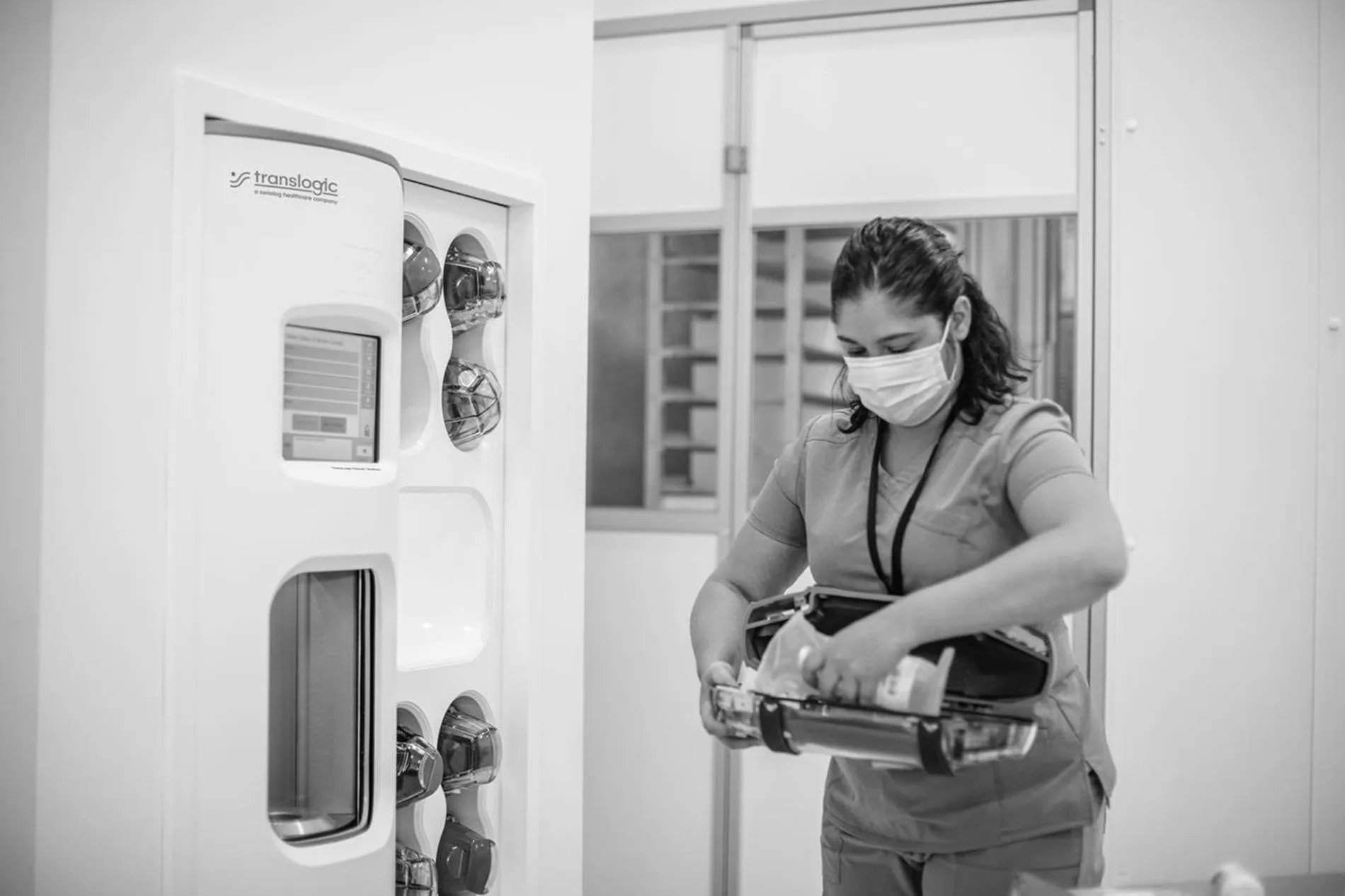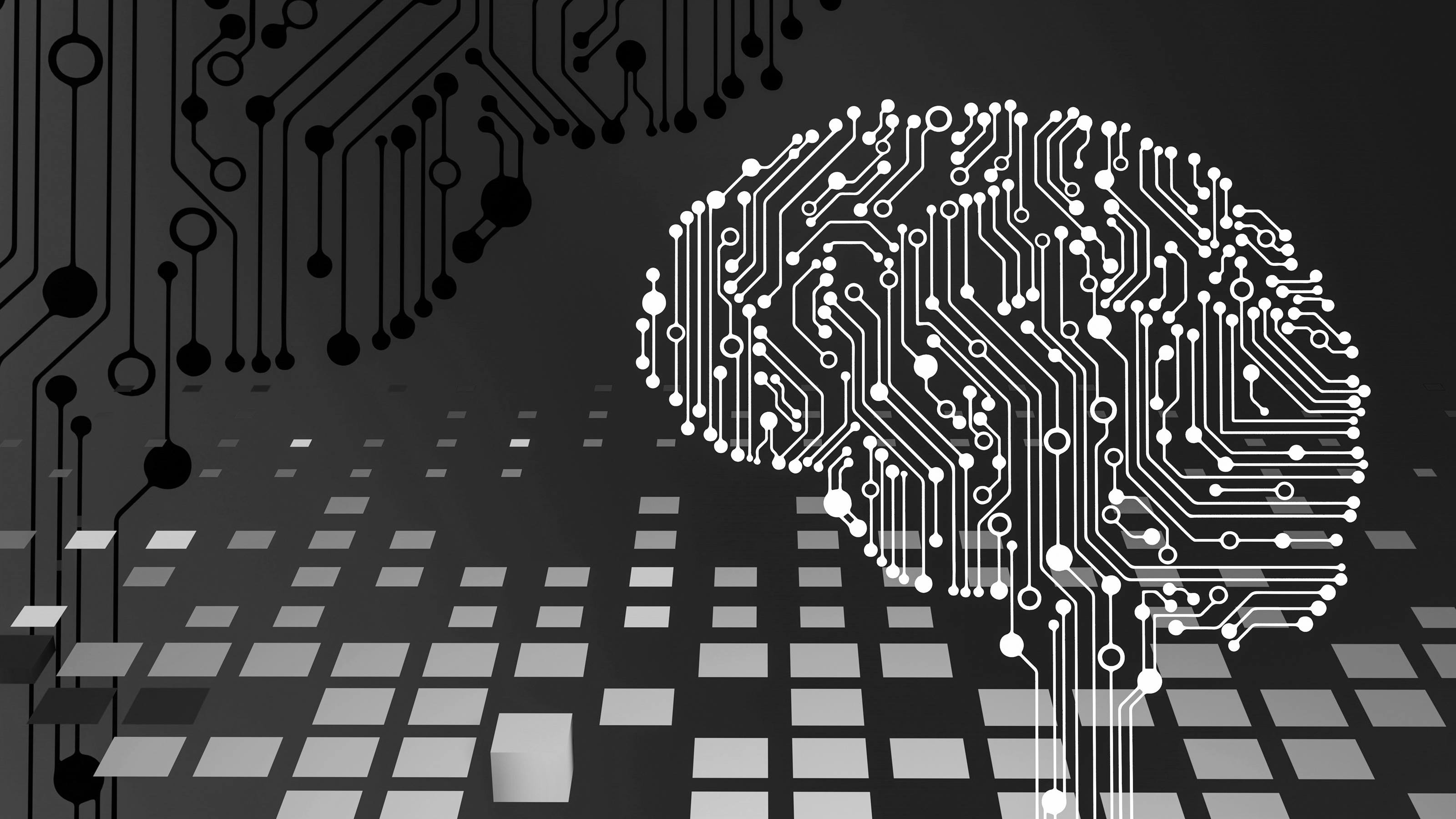
- Home
- Industry Thought Leaders
- Artificial Intelligence: The Next Big Upgrade For Tube Systems
Artificial Intelligence: The Next Big Upgrade for Tube Systems
Jeff Erbert | May 2025
Introduction:
Though Artificial Intelligence (AI) and machine learning (ML) are far from new concepts, recent advancements in technology mean our ability to compute has never been more sophisticated. Modern AI applications are capable of holding conversations, solving problems, and can interpret images with impressive competency. The impact of AI, then, will invariably become widespread as it holds great promise for myriad industries – including healthcare and others that make use of pneumatic tube systems.
Purpose:
The intent of this paper is to explore the potential of this technology as it relates to pneumatic tube system operation and service. Areas of potential impact include (but are not limited to) the following:
- Carrier Routing
- Maintenance & Repair
- Energy Efficiency
- User Behavior & User Interaction
- Reporting

Where Did Artificial Intelligence Come From?
By the 1980s, after decades of Defense Advanced Research Projects Agency (DARPA) interest and government-supported research, advances in hardware and processing power allowed computer scientists to begin developing algorithms that could manipulate electronic neural networks in new and increasingly sophisticated ways.
As of 2025, AI Has Achieved Several Impressive Feats Including:
- Writing: Using natural language (including many commonly spoken languages around the world), AI applications write with exceptional proficiency. They can also be fine-tuned to draw upon certain datasets, such as a user’s manual or installation guide, making them competent technical subject matter experts. In 2023, CodeX, The Stanford Center for Legal Informatics, confirmed that OpenAI’s Chat GPT-4 had passed the Uniform Bar Exam, scoring in the 90th percentile.
- Interpretation: In addition to writing, AI can read text, interpret images, and listen to sounds. These same programs can also generate and extrapolate images based off that input. A study published in January of 2023 by Radiology showed “proof-of-principle” for AI’s ability to interpret and reconstruct accurate rapid magnetic resonance images thereby making them four times faster than traditional scans. In terms of cancer detection, a new model called Clinical Histopathology Imaging Evaluation Foundation (CHIEF), was trained on 15+ million images showing various cancers. The CHIEF model achieved nearly 94 percent accuracy in cancer detection.
- Computation: Not only does AI consume and generate information, but its ability also to leverage large swaths of data make it a computational feat. OpenAI’s Chat GPT-4 model, for instance, queries can draw upon 1+ petabyte of data and 1.8 trillion parameters to generate responses.
To put that into perspective, here are a few examples of 1 petabyte in other figures: - 200+ million photos (5MB)
- 223,000 DVD movies
- 13.3-years-worth of HD video content
- 1 billion books
- 500 billion pages of text
How Could This Technology Be Used in Pneumatic Tube Systems?
Existing hospital operational technologies, such as pneumatic tube systems, are no exception when it comes to adopting new AI innovations.
These systems have been in use for decades (TransLogic has been in the field for over 100 years) and have naturally undergone numerous advancements, including but not limited to:
- RFID carrier tracking
- Touch-screen stations
- Badge access management
- Multi-carrier sends
- Advanced software control
- 3D design and planning
- Carrier speed control
- Automated carrier management
However, AI technology is poised to take operational technologies in hospitals to a new level. As it currently stands, pneumatic tube systems stand to benefit from AI in the following areas:
Carrier Routing:
Emory University Hospital in southeast Atlanta, a 635-bed campus that serves more than 100,000 patients annually processes approximately 3 thousand transactions per day — that’s nearly 1.1 million transactions per year. Hartsfield-Jackson Atlanta International Airport, comparatively, manages 2,100 arrivals and departures daily.
Large pneumatic tube networks are designed to manage large amounts of traffic, but as always, there is room for improvement. An AI application can analyze tracking information from years past and identify trends in carrier traffic not outright obvious to facility managers. The system will then be able to adapt accordingly, learning along the way, to ensure carrier traffic is travelling as efficiently as possible and that an adequate number of empty carriers are available at high traffic stations.
Maintenance & Repair:
Like analyzing traffic patterns, AI technology will be able to draw on years’ worth of data to highlight areas of the pneumatic tube system that will likely require maintenance, perhaps sooner than other areas. When a repair is necessary, TransLogic technicians already use AI models to query entire repair materials, company data, system maintenance data, and previous tickets to make assessments and repairs more quickly and accurately.
Dave Hartley, VP of operations for TransLogic explains, “It’s all related. If we can fix a tube issue quickly, that saves a nurse’s time walking down the hall with materials that can now be transported through the pneumatic tube system. It saves the technician’s time, the nurse’s time and all that equates to better patient care,” he says. “AI puts the ‘service’ back in customer service.”
Energy Efficiency:
Pneumatic tube systems operate intermittently, making them a fairly energy efficient means of ultra-fast transport. Yet, small inefficiencies can have an impact over time. AI analysis of tube system throughput data can reveal areas of the system that are less efficient based on engineering parameters. AI-analyzed data could reveal:
- A slow leak in a particular circuit
- Inadvertent pressure drops
- An overworked blower
- Sub-optimal routing that’s causing carriers to stop more than they need to
Efficiency gains will depend on the application and size of the healthcare institution. Hospitals that took the HHS Health Sector Climate Pledge in 2022 have committed to reducing emissions by 50% by the year 2030. By 2050, those same institutions are to achieve net-zero operation. These goals, while ambitious, are more achievable with the help of AI-supported energy management.
User Behavior & Interaction:
Modern stations come with features such as touch screens, badge scanners, lockable access doors, and multi-carrier sends. Future stations could employ the use of AI to power facial recognition technology for users, removing the need for badge scans, and present station settings based on their tube system transaction habits. For example, a certain user may regularly send specimens to the lab from a few different stations. The system could recognize that user, grant access, and present the option to send to the lab.
If a change is needed, an AI-powered voice assistant can likely interpret and enact the setting change. This reduces the amount of training required and makes using the pneumatic tube system more intuitive.
Reporting:
Much of AI’s promise stems from its ability to quickly query and analyze immense data sets. This paves the way for sophisticated reporting that can help hospital management identify where the system is performing well and where it needs improvement. With enough systemic data, AI models could theoretically make projections, create visually stunning representations, and make recommendations. They should also be able to integrate with existing data aggregation methods.
Conclusion:

The potential of AI is seemingly limitless, but there are a few areas where the human mind still possesses the edge. For now, AI models can only draw upon existing ideas and regurgitate information as it relates to the initial prompt or query.
When things become more abstract, relational to other abstractions, and/or require inference, like in a brand-new stand-up comedy routine, the AI model struggles to create interesting angles and imply things through subtext.
The same is true for many other ideas that require a carefully navigated balance of abstraction, theory, and information. In other words, AI models as they stand today, would not have arrived at Einstein’s theory of relativity without guidance.
Lastly, AI models can ‘hallucinate’ which just means they generate inaccurate information or reference data that isn’t pertinent to what’s being asked. All this to say, the challenge moving forward will be leveraging AI’s capabilities while recognizing its boundaries.
Talk to our experts
Contact our knowledgeable specialists to discover how our range of automation solutions can boost efficiency, reduce costs and enhance care at your healthcare facility.
Contact us